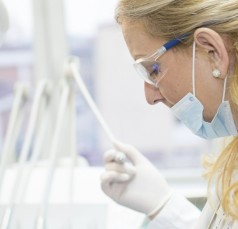Miniature Robotic Hands Help Perform Surgeries in Unborn Babies

A tiny robot device can help treat congenital disorders in unborn babies by creating 3D images, according to researchers.
Experts from the University College London and KU Leuven in Belgium identified a unique method of screening birth defects in fetuses using advanced 3D imaging technique. The $167 million costing automated robotic hand can scan blood circulation, organ damage and recognize conditions like spina bifida where a part of the spine protrudes through the bone openings in unborn babies. This can help doctors and surgeons take note of the health status of fetuses and decide when to perform surgeries and treatments, reports the Telegraph.
The new device has two thin probes with a camera attached at one end, which can be easily inserted inside the womb to produce a realistic image of the developing fetus. The other end of the probe will be directed to the damaged area with instruments.
Congenital defects occur in nearly one in 100 live births and early intervention can alleviate the risk of death and long term health damages. Complex surgical procedures on fetuses are conducted through key hole surgeries and only in cases of emergency or severe deformity. Procedures that require opening up the uterus can be risky for both mother and her child.
"Our aim is to combine less invasive surgical technologies with stem cell and gene therapies to treat a wide range of diseases in the womb, with considerably less risk to both mother and baby," Sebastien Ourselin, study author and professor at the UCL center for Medical Image Computing told the Observer, reports the Telegraph.
The expert added that the new miniature robot hand aids operating fetuses before 26 weeks of pregnancy. This research is funded by the Welcome Trust, U.K. and provides basis for innovating new surgical instruments and neonatal treatments like stem cell therapies.
"We are still in the design stage, so we could end up with a device with four or five arms in the end," added Ourselin. "Nor would it be used merely to put in patches. It could carry out delicate surgery or deliver stem cells to damaged organs," reports the Guardian.
Jun 03, 2014 04:37 AM EDT





